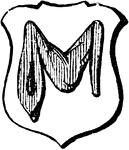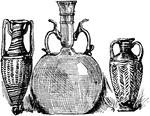
Castle of Hohenzollern
The ancestral home of Conrad of Hohenzollern and the third castle constructed on the site. The castle…

Hotel De Ville
Hotel De Ville was constructed about 1370 in the second half of the fourteenth century. Frescos at one…

Ramparts of Ulm
Ramparts or limes, defensive walls or fortifications constructed for defense of ancient cities or settlement…

Lintz on the Dabube
A picturesque view of Lintz (Linz) on the Danube with a small number of buildings on the river banks.…

City, Passau
Passau is one of the oldest cities in Germany, a village of Gauls in early days; and later, a Roman…

View of Lintz
A picturesque view of the Lintz (Linz) city center. Lintz was founded by the Romans, who called it "Lentia."…
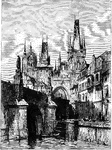
Karlsbrücke Bridge in Prague
An historic bridge in Prague, the Karlsbrücke - is a major site in Prague. Since 1402, it is a famous…
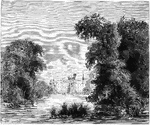
Castle Eisgrub
Eisgrub, now Lednice, a village in the Czech Republic. It contains a palace and the largest park in…
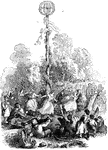
May Day Celebration
An illustration of a May day celebration. May Day occurs on May 1 and refers to any of several public…
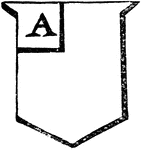
Canton Ordinary
"The canton is a square part of the escutcheon, usually occupying about one-eighth of the field; it…
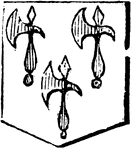
Battle Axe
"Argent, three battle axes gules two over one. BATTLE AXE. An ancient military weapon, frequently borne…

Hand and Bordure
"Argent, a sinister hand couped at the wrist and erected gules, within a bordure azure. BORDURE or BORDER.…
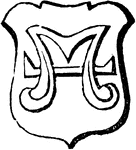
Boujet
"Argent, a boujet proper. BOUJET. An ancient water bucket, frequently borne in shields of arms." -Hall,…
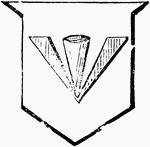
Broad Arrow
"Argent, a broad arrow gules. BROAD ARROW. An ancient weapon of war, thrown by an engine. It is frequently…
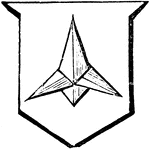
Caltrop
"Argent, a caltrop proper. CALTROP. An iron instrument made to annoy an enemy's cavalry. They were formed…

Chaplet
"Argent, a chaplet proper. CHAPLET. An ancient ornament for the head, granted to gallant knights for…

Diadem
"DIADEM, a circle of gold with points rising from it, worn by ancient kings as the token of royalty.…
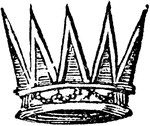
Eastern Crown
"EASTERN CROWN. A crown with rays proceeding from a circle, called by heralds an Eastern crown, is found…

Temple of Scrapis at Puzzuoli
On the coast of Naples, near the ancient town of Puzzuoli, stand three marble pillars forty feet in…
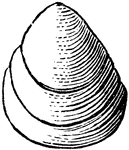
Lingula Prima
The Lingula prima is a little bivalve shell belonging at the bottom of the class Brachiopoda. The inarticulate…

Lingula Antigua
The Lingula antigua is a little bivalve shell belonging at the bottom of the class Brachiopoda. The…
Garpikes Fish
The gars, or garpikes, are members of the Lepisosteiformes (or Semionotiformes), an ancient order of…

Sigillaria, An Ancient Tree
Sigillaria is the generic name assigned to this ancient arborescent lycopod. Occassionally the trunks…

Pecopteris Tree Fern
Pecopteris, frond of an ancient tree fern, was a form genus of leaves from several unrelated plant groups…

Niagara River and Falls
Niagara, though often popularly translated as "Thundering Waters", this is a folk translation with no…
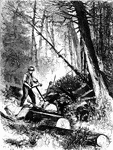
Buried Swamp
Ancient cedar trees were found buried beneath the Dennisvill swamp in southern New Jersey. It was believed…
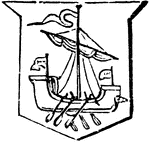
Galley
"GALLEY. An ancient vessel propelled by oars; frequently used in shields of naval officers." -Hall,…

Knights-Banneret
"KNIGHTS-BANNERET. This ancient and honourable order has become extinct. It obtained the title of banneret…
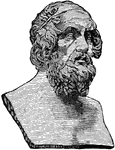
Bust of Homer
Homer is traditionally held to be the author of the ancient Greek epic poems the Iliad and the Odyssey,…

Sculpture of Demosthenes
Demosthenes was a prominent Greek statesman and orator of ancient Athens. His orations constitute a…

Epicurus
Epicurus was an ancient Greek philosopher and the founder of the school of philosophy called Epicureanism.…
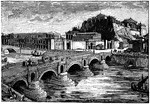
Capitoline Hill in Rome
The Capitoline Hill, between the Forum and the Campus Martius, is one of the seven hills of Rome. By…
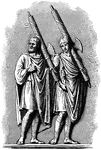
Roman Civil Servants
An illustration of two lictors, members of a special class of Roman civil servants. Lictors had special…

A Roman Soldier, or Legionary, with a Short Javelin and Shield
Illustration of a Roman soldier, also called a legionary, carrying a shield, short sword, and a short…

Publius Cornelius Scipio
Publius Cornelius Scipio (died 211 BC) was a general and statesman of the Roman Republic. A member of…
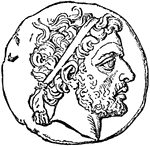
Philip V of Macedonia Coin
An illustration of a coin with the face of Philip V of Macedonia. Philip V was King of Macedonia from…
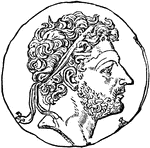
Perseus of Macedonia Coin
An illustration of a coin with the face of Perseus of Macedonia. Perseus the legendary founder of Mycenae…

Bust of Marius
Gaius Marius was a Roman general and politician elected consul an unprecedented seven times during his…

Lucius Cornelius Sulla Felix
A sculpture of the head of Lucius Cornelius Sulla. Lucius Felix. Lucius Cornelius Sulla Felix, or simply…
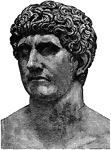
Bust of Mark Antony
Marcus Antonius, known in English as Mark Antony, was a Roman politician and General. He was an important…
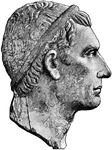
Bust of Julius Caesar
Gaius Julius Caesar was a Roman military and political leader. He played a critical role in the transformation…

Coin of Vespasian
Titus Flavius Vespasianus, commonly known as Vespasian (November 17, 9 – June 23, 79), was a Roman…

Streets of Pompeii
An illustration of the streets of Pompeii. Pompeii is a ruined and partially buried Roman town-city…
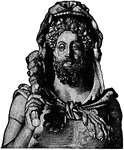
Bust of Commodus
Lucius Aurelius Commodus Antoninus (31 August 161 – 31 December 192) was a Roman Emperor who ruled…
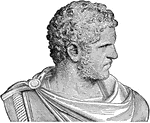
Bust of Caracalla
Caracalla (April 4, 188 – April 8, 217. Caracallus ), born Lucius Septimius Bassianus and later called…

Roman Forum in 1885
An illustration of the Roman Forum as in 1885. The Roman Forum, sometimes known by its original Latin…
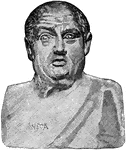
Bust of Seneca the Elder
An illustration of the bust of Seneca the Elder. Lucius or Marcus Annaeus Seneca, known as Seneca the…
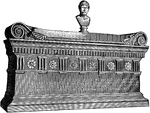
Sarcophagus of Lucius Cornelius Scipio Barbatus
An illustration of the sarcophagus of Lucius Cornelius Scipio Barbatus. Lucius Cornelius Scipio Barbatus…

Sculpture of John Wycliffe
A sculpture of John Wycliffe, an English theologian, lay preacher, translator and reformist. Wycliffe…

Mary I of England
Mary I (18 February 1516 – 17 November 1558), was Queen of England and Queen of Ireland from 19…

Mitre
"MITRE. A sacerdotal ornament for the head, worn by Roman Catholic archbishops and bishops on solemn…
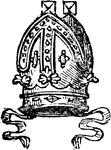
Mitre
"Mitre. A sacerdotal ornament for the head, worn by Roman Catholic archbishops and bishops on solemn…

Pall
"Azure, on a pall argent, four crosses fitchy sable, in chief a cross pattee of the second. PALL. A…
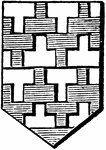
Potent
"Argent and azure, potent and counter potent. Some armorists call counter potent vary cuppy. POTENT.…
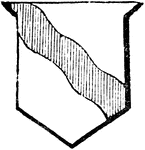
Bend Undy
"Argent, a bend undy, gules. UNDY. A term used to express the word wavy by Gwillim and other ancient…

Roman Cameo-Glass
"Ancient Roman Cameo-Glass. Amphora from Pompeii, Museo Nazionale, Naples." -Whitney, 1911

The Kiss of Judas
The Kiss of Judas is an engraving by Albrecht Dürer in 1508. It is part of a series of engravings…

